When the good ship Uncle Toby brought the new Fresnel lens to New York and the lens was subsequently deposited at the Edgartown wharf, almost a hundred years ago, little did the drivers, or anyone else for that matter, dream that the forty yoke oxen employed to transport the lens across the Island to Gay Head would not be the last agents to ever move the sixty frames of glass prisms and the multitudinous collection of machinery necessary to operate the light. This week all of these things were back in Edgartown.
The prisms are now spread out on the floor of two rooms in the society’s building and the machinery is being lodged in a temporary structure next to the new tower. The prisms are fascinating to see in their dismantled state because it is only in that state that the observer realizes the tremendous number of pieces that constitute the lens.
The historical society hopes to have the lens installed in the new tower and in working order inside of a month. For the installation the Coast Guard has lent the society the services of one of its own engineers, a civilian whose name is N. O. Robertson and who is greatly experienced in the technology of lighthouses. Mr. Robertson will be on hand to see that all the myriad parts get back into the right places.
A Complicated Task
The dismantling of the lens from the Gay Head lighthouse proved to be a complicated task requiring the concentrated efforts of the men employed on the job. Each unit of the lens had to be removed from the tower through a small window, approximately four feet by four feet, on to the railed catwalk about two-thirds the way up the fifty-two foot tower. At the point an A-frame with a block and tackle was used to lower the individual pieces to the ground.
Last Thursday two-thirds of the glass prisms were removed and transported to the historical society building in Edgartown, and the next day the remaining prisms were removed, in addition to the cast iron structural units which constitute the ornamental base of the lens and the brass oil pumping apparatus which fed fuel to the amazingly small flame that, by the ingenious system of tonnage, and to the men all previous machinery was as feathers.
A new system of lines had to be set up on the blocks and tackle. Mr. Norton’s heavy truck had to be brought into use as a bracing force to lower the shaft to the ground after strenuous maneuverings had got the thing out of the small window. A major portion of the afternoon was consumed just in making preparations for the lowering.
It was the shaft with its unyielding weight that prompted one of the men, straining to uproot it from its lodging on the iron plating, to utter condemnation of “that Frenchman who built this thing.”
“You’re too late,” responded another of the workmen in a jovial mood, “the old boy passed away many years ago.”
An indirect compliment was thus advanced to M. Fresnel and to his times. When the lens was installed in 1856, it was intended that it remain forever. Only grudgingly did it allow itself to be removed.

From the September 26, 1952 edition of the Vineyard Gazette:
Gay Head Lens Reaches New Home
Within a minute or two of high noon on Wednesday the first frame of glass prisms was put into its place in the newly constructed tower on the Dukes County Historical Society grounds in Edgartown. Thus was another step accomplished in the movement of the Fresnel lens from useful activity in the Gay Head lighthouse to its position as a relic of vanished era in Edgartown.
Earlier in the week, the central pedestal or shaft on which the whole lentical apparatus rests and revolves, was secured to he concrete base on the floor of the small tower, and the various pieces of the iron under-structure, ornamented by a sort of serpentine bas-relief - in the fashion of the most machinery in the middle of the last century - was fitted together on the turntable on top of the pedestal.
Almost the Same
With two exceptions, it is believed that the Fresnel lens when it stands completely re-erected in Edgartown will be in the identical state it was in when originally erected in 1856 in the Gay Head lighthouse. One exception is the group of red glass panels which were responsible for the alternating red and white flashing of light when the lens was in operation. The red glass, it is thought, was not made by the Paris manufacturer of the lens, Henry Lapaute, but was standard U. S. Government issue.
The oil lamp too, which furnished the flame in recent years, is not that of the original manufacturer. The first lamp, which had five concentric wicks, was replaced at a later date - presumably in fairly recent times - by an incandescent oil vapor-mantel device which was in use until the lens was dismantled earlier this month. A search, so far fruitless, is being made for the original lamp.
The work on the re-erection of the lens was delayed this week by the chilly rain on Tuesday. Therefore the duties requiring the supervision of the two coastguardsmen brought especially from Boston were not completed Wednesday afternoon, which was supposed to be the last day on the Island for Joseph Dedeo and Anthony Ricci. A nervous call to the Boston authorities, however, by the historical society obtained permission for their men to stay over Thursday in order to finish the work.
Aiding the two coastguardsmen were men from Mr. Henley’s company, Lester Perry, Frank Campos, Emory Willoughby and Forrest Bosworth.
By Thursday afternoon the last of the prisms were put into place in the tower - all 1,008 of them by an actual count made by Mrs. Benjamin C. Mayhew and Mr. and Mrs. H. Franklin Norton. Theodore P. Henley, the contractor for the project, estimates that it will not be completely finished for a month, since after all the machinery has been installed the tower itself must be completed on the interior.





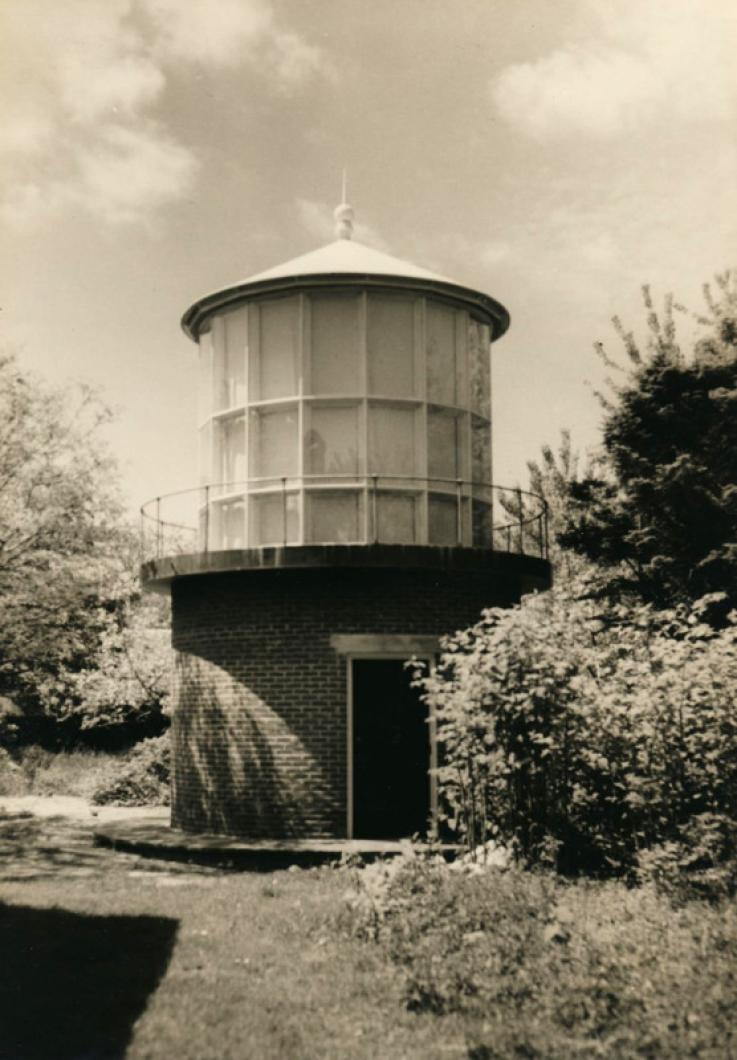


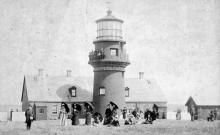
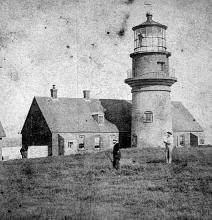
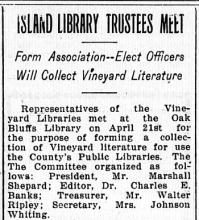
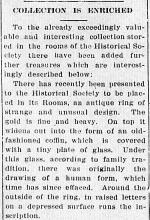
Comments